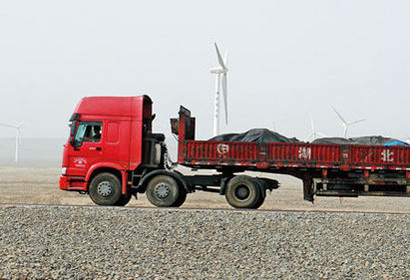Concerns over added value
Wang Yong implicitly pointed out that Xinjiang will be developed into a large-scale petroleum and petrochemical base for production and processing, a coal chemical and coal-generated power base, and a wind power base.
For example, PetroChina plans to build its largest petroleum and petrochemical base for production and processing in Xinjiang. China's largest coal producer Shenhua will invest 100 billion yuan ($15.5 billion) over the coming five years and build a coal oil base. China Power Investment Corp, one of the country's five major state-owned power producers, will also pump more than 70 billion yuan ($10.8 billion) into the region over the next five years.
There is a glaring problem with this arrangement, however. Although the SOEs are producing and selling their products in Xinjiang, their headquarters are not located there, so corporate income taxes will not be paid to Xinjiang. Wang Ning described the role of Xinjiang as one big construction site, because it is almost empty, despite its flourishing and prosperous facade.
According to Wang, Xinjiang can only receive resource taxes and 25% of the value added tax (VAT). So what benefits do the investments from the central SOEs actually bring to Xinjiang?
Wang revealed that renewable energy resources may be a good choice for central SOEs, because such projects are usually sustainable and come with high VAT, and will also cause less pressure to the environment.
Exchange resources for stock shares?
Chen Yuenian, director of the Property and Tax Department of the Xinjiang Local Tax Bureau revealed that, before 2010, the resource tax was calculated by quantity. For example, in 2003, when the price of crude oil was 480 yuan ($74.2) per ton, the resource tax was 12 yuan (about $1.9) per ton. In 2008, the crude oil price soared to 4,800 yuan ($742) per ton, and the resource tax was changed to 30 yuan ($4.6) per ton. It was observed that the rate for the resource tax was less than 1%.
In order to sustainably attract central SOE investment, Xinjiang has been trying to expand the range of its resource tax implementation.
In June last year, a tax on the sale of crude oil and natural gas in Xinjiang was introduced by the Chinese government to increase revenues for the local government, part of a support package for the resource-rich region.
The 5% tax, effective from June 1, 2010, drew in around 2 billion yuan in revenue for the Xinjiang government by the end of last year. Currently the resource tax is calculated by its price, with the rate between 3.27% and 5%.
The tax is also a move by the central government to save natural resources by raising the consumption cost. It is expected to be expanded to cover coal as well, on top of thick oil and high condensation oil, among others.
Though this has increased local finance, it is obviously not the best choice. Wang Ning advised that it is better to set up a new system by exchanging resources for stock shares. With stock ownership, profits can be better secured, he said.
Of course, this is only an idea, but may be the development direction for the future. In order to promote development in Xinjiang, more efforts need to be made in other fields too, such as the meat and dairy industries. Moreover, a "going out" strategy may be a further consideration for Xinjiang's development.


















